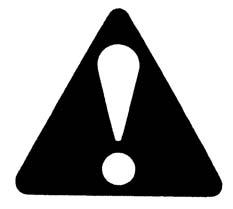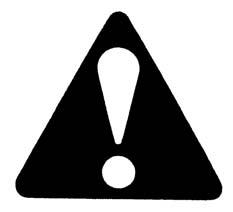
2 minute read
SAFETY
from Gehl RS6-42 GEN2 RS8-42 44 GEN2 RS9-50 GEN2 RS10-44 55 GEN2 RS12-42 GEN2 Handler Operator's Manual
sible hazard. Therefore it should not be considered a substitute for good judgment and safe practices in operating the machine. If the ROPS / FOPS structure is damaged, it must be replaced to restore the protection it provides.


Ü This machine is equipped with a horn and backup alarm. The user must determine if operating conditions require the machine to be equipped with additional devices (mirrors, rotating beacon, etc.) and be responsible for providing and maintaining such devices.
Warning
The machine must not be used to lift or carry personnel, or be fitted with any form of personnel work platform unless fitted with the optional PWP System.
If fitted with the PWP System, the Mandatory Work Platform Safety Rules must be followed at all times while lifting personnel.
The Mandatory Work Platform Safety Rules must be adhered to at all times while elevating personnel. These rules are based on ANSI/ITSDF Standard B56.6-2005, “Safety Standard for Rough Terrain Forklift Trucks.” (A copy of this and related standards can be obtained from the Industrial Truck Standards Development Foundation, 1750 K Street NW, Suite 460, Washington, DC 20009; or downloaded from: www.itsdf.org.) The rules apply to the owner, operator and the personnel in the work platform.
Mandatory Work Platform Safety Rules
1.The work platform must comply with ANSI/ITSDF B56.6-2005, Sec. 8.24, “Platforms for Elevating Personnel.” (See page 21, “Work Platform Design Requirements.”)
2.The platform must be securely attached to the carriage or forks, and the carriage securely attached to the boom. The forks must not protrude beyond the floor of the work platform.
3.The carriage and forks must be secured to prevent them from pivoting upward.
4.If the machine is equipped with a rotating or swinging carriage, the rotation or swing must be deactivated. (This occurs automatically when the PWP System is switched on.)
5.Personnel on the platform must be provided protection from any moving parts on the forklift that may present a hazard.
6.If overhead hazards exist for platform personnel, overhead protection must be provided.
7.Be sure that the lifting mechanism is operating smoothly throughout its entire range, both empty and loaded, and that any lift-limiting devices and latches are functional.
8.Be sure that the frame is level, to ensure a vertical lift.
9.Be sure the platform is horizontal before lifting.
10.Be sure that the forklift has a firm footing.
11.Be sure that any required restraining means (railings, chains, harnesses, etc.) are in place and properly used.
12.Before lifting personnel, shift the transmission into Neutral, apply the parking brake, and activate the PWP System mode switch.
13.Before lifting personnel, the area should be marked to warn others of work by elevated personnel.
14.Be sure the path of platform travel is clear of hazards, such as scaffolds, electrical wires and overhead obstructions.
15.The operator must keep hands and feet clear of controls that are not in use.
16.Personnel must be lifted and lowered smoothly and cautiously, and only at their request.






